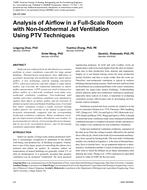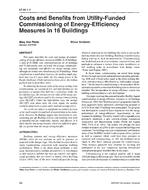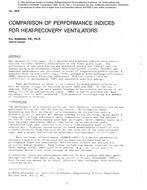Click here to purchase
The means for keeping the indoor relative humidity (RH) and pollutant concentration below a threshold level of interests are necessary and essential to improving building performance in terms of indoor air quality (IAQ), energy performance and durability of building materials. In this paper, the similarity between the moisture and VOC (Volatile Organic Compounds) transport models is applied to study the effect of toluene (a typical VOC) and moisture buffering capacities of a hemp concrete wall on indoor toluene concentration and RH. A numerical model which can be used to simulate VOC emissions from materials under dynamic conditions is presented. The model is implemented in the environment SPARK (Simulation Problem Analysis and Research Kernel) which is suited to complex problems using finite difference technique with an implicit scheme. The pollutant transport and storage properties obtained from hygrique properties of hemp concrete based on the assumption of the similarity between toluene and moisture transport has been presented. At the room level, the results obtained show that taking into account the sorption capacity toward moisture and toluene has a significant effect on hygric comfort and IAQ because hemp concrete contributes to dampen indoor RH and VOC variations. The numerical model presented is very useful for the building design optimization and can be used for a fast estimation of indoor pollution and hygrothermal conditions in a room.
Product Details
- Published:
- 2022
- Number of Pages:
- 8
- File Size:
- 1 file , 1.6 MB
- Product Code(s):
- D-IAQ2020-C2-C41
- Note:
- This product is unavailable in Russia, Belarus


